
Maths on the Back of an Envelope: Clever Ways to (Roughly) Calculate Anything
by
Rob Eastaway
Published 18 Sep 2019
For example, if your savings go up by 3.3% in one year, 3.1% the next, and 2.7% the year after that, you’re not far off the right number if you say that the total growth over three years will be 3.3 + 3.1 + 2.7 = 9.1% (and using Zequals, you can simplify it further: 3% + 3% + 3% = 9%). This is fine over short periods. But over longer periods there’s another handy rule of thumb: the Rule of 72. DOUBLE YOUR MONEY – THE RULE OF 72 If your bank pays you compound interest at 4%, how long will it be before you have doubled your money? This complex-sounding calculation can be answered with a deceptively simple rule. It’s known as the Rule of 72. Whatever the growth rate (be that 1.2%, 4%, 10% or even 30%), the time it will take for the quantity in question to double can be found by dividing it into 72. With an interest rate of 4%, your money in the bank will double in 72 ÷ 4 = 13 years.
…
So, for example, the first significant figure of 0.0063 is 6. It’s possible for a significant figure to be zero, including a number’s final digit. For example, if an athlete runs 100 metres in 10.28 seconds, that is 10.3 seconds to three significant figures, and 10 seconds to two significant figures. WHERE THE RULE OF 72 COMES FROM The ‘Rule of 72’ is found by working out how many iterations (years, for example) it takes for a number to double if it is growing at a fixed rate. To follow the derivation, you do need to be familiar with natural logarithms. Let’s call the annual interest rate R per cent. What we are looking for is the number of years, N, that it will take our starting pot of money, A, to double; i.e. after N years we will have an amount 2A: A × (1 + R)N = 2A Cancelling A on both sides: (1 + R)N = 2 Take logarithms of both sides: N.ln(1 + R)= ln 2 = 0.69 (= 69%) There is a rule of thumb familiar to mathematicians that if R is small then ln(1 + R) ≈ R (this is accurate to within 5% if R < 10%).
…
That is the figure that emerges from doing the algebra behind exponential growth (described in more detail here). But try dividing anything into 69.3 and you’ll end up with a mess. Whoever first worked out this rule quickly spotted that by nudging it up to 72 instead, there was a chance people would be able to work out the numbers on the back of an envelope – or even in their heads. So the Rule of 72 it is.2 Knowing how long it will take for numbers to double is handy, but there may be times when you want to know a different target. What about trebling your money, or increasing it tenfold? It turns out there is a rule of thumb for any target of growth that you choose. In each case, it uses a convenient number that is quite close to the accurate one.
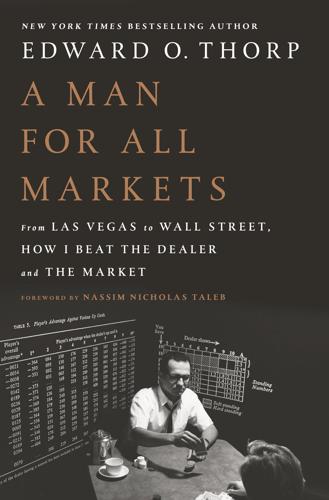
A Man for All Markets
by
Edward O. Thorp
Published 15 Nov 2016
To get quick approximate answers to compound interest problems like these, accountants have a handy trick called “the rule of 72.” It says: If money grows at a percentage R in each period then, with all gains reinvested, it will double in 72/R periods. Example: Your money grows at 8 percent per year. If you reinvest your gains, how long does it take to double? By the rule of 72, it takes 72 ÷ 8 = 9 years, since a period in this example is one year. Example: The net after-tax return from your market-neutral hedge fund averages 12 percent a year. You start with $1 million and reinvest your net profits. How much will you have in twenty-four years? By the rule of 72, your money doubles in about six years.
…
By the rule of 72, your money doubles in about six years. Then it doubles again in the next six years, and so forth, for 24 ÷ 6 = 4 doublings. So it multiplies by 2 × 2 × 2 × 2 = 16 and becomes $16 million. For more on the rule of 72, see appendix C. The rule of 72 can expose outrageous claims. My personal trainer went to a stock market seminar where the operators were pitching a method called “rolling stocks.” Selecting common stocks that would supposedly oscillate between two levels, they advised the investor to repeatedly buy low and sell high. The operators claimed the suckers could make 22 percent a month. Why would they bother to share their secret when, by putting $2,000 in a tax-deferred IRA and reinvesting their gains, they would have more than $46 trillion in ten years?
…
From: Ibbotson, Stocks, Bonds, Bills and Inflation, Yearbook, Morningstar, 2014. Siegal’s Stocks for the Long Run gives US returns from 1801. Dimson et al. give returns for sixteen countries and an analysis. The return series depends on the time period and on the specific index chosen. Appendix C * * * THE RULE OF 72 AND MORE The rule of 72 gives quick approximate answers to compound interest and compound growth problems. The rule tells us how many periods it takes for wealth to double with a specified rate of return, and is exact for a rate of 7.85 percent. For smaller rates, doubling is a little quicker than what the rule calculates; for greater rates, it takes a little longer.

Model Thinker: What You Need to Know to Make Data Work for You
by
Scott E. Page
Published 27 Nov 2018
Using the equation, we can calculate that a $1,000 bond paying 5% annual interest increases in value by $50 in year one and by more than $100 in year twenty. To draw clean inferences, we assume a constant growth rate. Given that assumption, we can manipulate the exponential growth equation to derive the rule of 72. Rule of 72 If a variable grows by a percentage R (less than 15%) each period, then the following provides a good approximation: Periods to Double ≈ The rule of 72 quantifies the cumulative effect of higher growth rates. In 1966, Zimbabwe had a per capita GDP of $2,000, twice that of Botswana. Over the next thirty-six years, Zimbabwe experienced little growth. Botswana, meanwhile, averaged 6% growth, meaning that Botswana’s GDP doubled every twelve years.
…
But he ignored the potential for innovation—the focus of models later in this chapter. Innovation subverted the trend. The exponential growth model can be applied to the growth of species as well, and not just to rabbits. When you acquire a bacterial infection, tiny bacteria reproduce at incredible rates. Bacteria in human sinuses grow at around 4% a minute. By applying the rule of 72, we can calculate they double every twenty minutes. In a single day, each initial bacterial cell spawns over a billion offspring.2 Their growth stops when the physical constraint of your sinuses leaves them no room. Food constraints, predators, and lack of space all reduce growth. Some species, such as deer in suburban America or the hippos brought to Colombia by drug lord Pablo Escobar, encounter few constraints on growth and their population grows rapidly, though not at bacterial rates.3 A convex function with a positive slope increases at an increasing value.
…
In a less pluralistic society, the newspaper industry might have lobbied the government to stop Craigslist. Doing so would have slowed growth. Japanese Chinese Economic Dominance Linear model + rule of 72: From 1960 to 1970 Japan’s GDP grew at a 10% annual rate. A linear projection of continued 10% increases would result in a doubling of the Japanese economy every seven years (using the rule of 72). In 1970, Japanese per capita GDP was approximately $2,000 in current US dollars. Had that trend continued, by 2012 per capita GDP would have doubled six times, resulting in a per capita GDP of $128,000. Growth model: This model explains Japanese growth as due to investments in physical capital.

Retire Before Mom and Dad
by
Rob Berger
Published 10 Aug 2019
In that year, Pacioli published a book on mathematics called the Summa de arithmetica, geometria, proportioni et proportionalita (Summary of arithmetic, geometry, proportions, and proportionality.) In his work he describes what has become known as the Rule of 72. Here’s what he wrote: “In wanting to know of any capital, at a given yearly percentage, in how many years it will double adding the interest to the capital, keep as a rule [the number] 72 in mind, which you will always divide by the interest, and what results, in that many years it will be doubled. Example: When the interest is 6 percent per year, I say that one divides 72 by 6; 12 results, and in 12 years the capital will be doubled.”9 The Rule of 72 enables us to estimate how long it will take to double our money given a certain interest rate.
…
The result is an estimate of how many years it will take us to double our initial investment. For example, if we earn 7% annual interest on an investment, it will take us about 10 years to double our money (72/7 = 10.2 years). Earn 9% interest, and the time to double our money shrinks to about eight years (72/9 = 8). The Rule of 72 doesn’t account for additional investments. It assumes you invest one lump sum of money at the start. Still, it gives us a glimpse into the power of the Money Multiplier. The difference between 7% and 9% interest may not seem like much, yet at 9% we double our money in eight years rather than 10.
…
Like a tiny seed that grows into a mighty oak tree, small decisions we make today will supercharge our finances down the road. * * * 9 https://en.wikipedia.org/wiki/Rule_of_72#History 10 https://personal.vanguard.com/us/insights/saving-investing/model-portfolio-allocations 3 Key Takeaways The Rule of 72 offers an easy way to determine how long it will take you to double your money. It also gives us a glimpse into the importance of our investment returns. Small changes in investment returns, even “just” 0.3%, will, over the long run, have major effects on your wealth. Larger changes in investment returns, such as 1%, will have life-changing effects on your money.
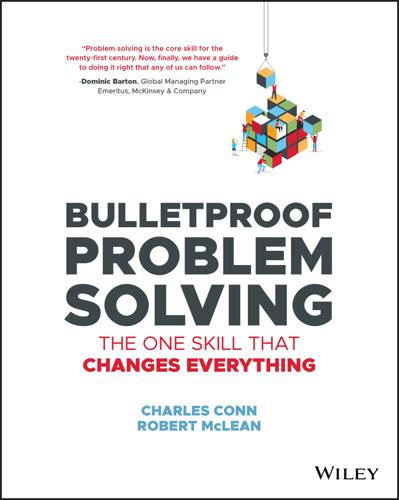
Bulletproof Problem Solving
by
Charles Conn
and
Robert McLean
Published 6 Mar 2019
Compound growth is key to understanding how wealth builds, how enterprises scale quickly, and how some populations grow. Warren Buffett said: “My wealth has come from a combination of living in America, some lucky genes, and compound interest.”4 A really quick way to estimate compounding effects is to use the Rule of 72.5 The rule of 72 allows you to estimate how long it takes for an amount to double given its growth rate by dividing 72 by the rate of growth. So, if the growth rate is 5% an amount will double in about 14 years (72/5 = 14.4 years). If the growth rate is 15%, doubling occurs in four to five years. In a team meeting, Rob asked our research team what a $1000 investment in Amazon would be if you invested at the time of the initial stock offering in 1997.
…
Charles thought about it for about 90 seconds: He tried a low rate of compounding of 5%, where doubling occurs every 14 years, then a high rate of 50% where doubling occurs every 18 months, before settling on $100k. The actual answer is $83k based on a 36% compounding rate, doubling every 2 years. Pretty good with no facts, just the Rule of 72! Where do errors occur with the rule of 72? When there is a change in the growth rate, which of course is often the case over longer periods. This makes sense, as few things continue to compound forever (try the old trick of putting a grain of rice on the first square of a chessboard and double the number on each successive square).
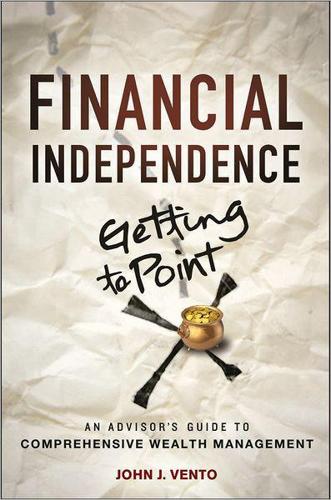
Financial Independence
by
John J. Vento
Published 31 Mar 2013
As a result, in year two, your original $100,000 increased its earning power by $250 with all other factors remaining the same. With each year that passes, the earning power increases: This is referred to as the power of compounding. You can truly appreciate this over time, because the outcome can be astonishing. The Rule of 72 Before I describe how to use the financial tables provided in the following pages, I would like to explain the Rule of 72, which unlocks the answer to how long it will take you to double your money. Of course, the answer to this depends on your interest rate (rate of return). Simply divide the assumed rate of return into 72. For example: • If your assumed rate of return is 10 percent, divide 10 into 72, which equals 7.2 years. • If your assumed rate of return is 5 percent, divide 5 into 72, which equals 14.4 years.
…
Tax System 12 Organizing and Retaining Your Records 15 Tax-Preparation Services 16 Accumulating Wealth through Tax Planning 18 ix ftoc.indd ix 26/02/13 11:17 AM x Contents Chapter 3 Chapter 4 Chapter 5 Chapter 6 ftoc.indd x Determining Your Financial Position 23 Figuring Your Financial Net Worth 24 Case Study: How One Couple Learned They Were Spending More Than They Earned 24 Making Sense of Cash Flow 35 Establishing Your Financial Goals 57 Finding Trusted Advisors 61 Managing Debt 67 Case Study: How Two Doctors Went Bankrupt in Only a Few Years—What Not to Do 67 Basic Principles for Managing Debt 71 Good Debt versus Bad Debt 73 Credit-Card Debt 74 Auto Loans 80 Student Loans 81 Home Mortgage Loans 82 Business and Investment Loans 86 Understanding Credit 87 Your Credit Report and Your Credit Score 89 Preventing Identity Theft 93 Analyzing Your Debt 94 Insuring Your Health and Life 99 Choosing a Health Insurance Plan 100 Long-Term Care Insurance 111 Disability Insurance 118 Life Insurance 122 Buying Insurance Policies 128 Protecting Your Property with Insurance 133 Case Study: How a Lack of Insurance Wiped Out One Woman’s Life Savings 134 Homeowner’s Insurance 136 Automobile Insurance 140 Umbrella Liability Insurance 144 Buying Insurance Policies 147 26/02/13 11:17 AM Contents Chapter 7 Chapter 8 Chapter 9 Paying for College 153 Case Study: How Not Saving for Your Child’s Education Can Ruin Your Finances—and Your Child’s 156 Conducting a “Needs Analysis” for Your Children’s College Educations 160 Strategies for Saving Money for College Education 162 Education Tax Deductions and Credits 179 Planning for Retirement 187 Case Study: Saving versus Not Saving for Retirement: The $1.7 Million Difference 187 Retirement Equation: Calculating Your Personal Point X 191 The High Cost of Waiting to Save for Retirement 193 What You Can Expect to Receive from Social Security 196 Qualified Retirement Plans 198 The Difference between Traditional IRAs and Roth IRAs 203 Fixed and Variable Annuities 209 Retirement Funding: “Needs Analysis” 212 Managing Your Investments 221 Analyzing Your Risk Tolerance 222 Stocks, Bonds, Mutual Funds, and Exchange-Traded Funds 226 Diversification and Modern Portfolio Theory 234 Asset Allocation and Rebalancing 237 Dollar-Cost Averaging 243 Inflation and Taxes: The Biggest Drains on Investment Return 245 Medicare Surtax on Net Investment Income 246 Chapter 10 Preserving Your Estate ftoc.indd xi xi 251 The Federal Gift and Estate Tax System 252 Legal Documents to Consider for Estate Planning 252 The Probate and Administration Process and Why You May Want to Avoid It 257 Using a Planned Gifting Strategy 261 Ownership of Property and How It Is Transferred 262 Reasons for Creating a Trust 265 Benefit from a Family Limited Partnership 277 Estate Tax Planning and Life Insurance 278 26/02/13 11:17 AM xii ftoc.indd xii Contents Chapter 11 The Time Value of Money 285 The Rule of 72 286 Appendix A: Selecting a Trusted Advisor 301 Appendix B: 101 Ways to Save $20 or More per Week 311 Appendix C: Basic Concepts and Definitions of Various Types of Taxes 321 About the Author 341 Index 343 26/02/13 11:17 AM Preface Living the American Dream M y first clients were quintessential examples of successful American Dreamers.
…
This example verifies that time is money and that one of your most valuable financial assets is time. By getting off to an early start with your retirement savings program, you can take advantage of the power of compounding. Your annual savings have the potential of earning a rate of return, and so does your reinvested earnings. Look at the Rule of 72 in Exhibit 11.1 to see just how powerful compounding can be. This is the secret to financial independence: by letting your money work for you, eventually, you will no longer have to work to maintain your desired standard of living. If you have been finding it difficult to save money on a regular basis, implement the following savings strategies that will take money directly from your paycheck on a pre-tax basis.
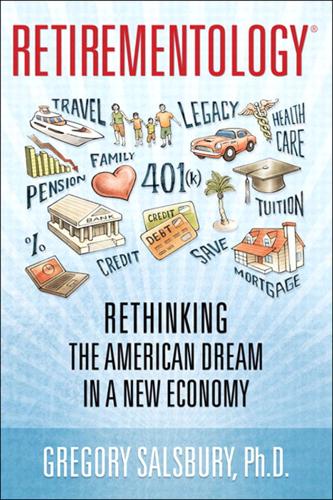
Retirementology: Rethinking the American Dream in a New Economy
by
Gregory Brandon Salsbury
Published 15 Mar 2010
In the world of finance, many professionals utilize a mathematical formula called the Rule of 72, and it provides a thumbnail estimate of how long it may take an investor’s portfolio to double in value. The Rule of 72 simply divides 72 by the assumed rate of return to get a rough estimate of how many years it will take for the initial investment to double. For example, if we assume a rate of return of 7.2%, your money will double every 10 years. (Using this rule, at a 10% rate of return, your money would double in 7.2 years.) Simple as that. However, when you apply the reality of taxation, the formula can change dramatically. The Rule of 72 becomes a concept I call 72/33/50; assuming a 33% tax rate, it takes 50% longer to double your money.

Quit Like a Millionaire: No Gimmicks, Luck, or Trust Fund Required
by
Kristy Shen
and
Bryce Leung
Published 8 Jul 2019
If I invest $1,000 with a return of 6 percent a year, it’ll compound into $2,000 in 12 years without my investing another cent. That balance goes up over time, because the money I make makes more money, which in turn makes even more money. When you’re an investor, the Rule of 72 is your friend. It helps your money grow. But if you have debt, the Rule of 72 is your enemy. It works against you to take what little money you have. Credit cards typically have interest rates around 20 percent, so if I borrow $1,000 to buy a flat-screen TV, it would take only 72 / 20 = 3.6 years for my debt to double. Another 3.6 years and the debt quadruples.
…
Since consumer debt has the highest interest rate, you want to slay this bad boy first. Consumer debt should be treated as what it is: a financial emergency that you have to take care of now. Here are a few things you can do to sharpen your stake. 1. Cut expenses to the bone, even if it hurts. Consumer debt has the highest interest rate of all and, as per the Rule of 72, doubles faster than any other type of debt. You need to treat this as a crisis. There is absolutely no point in investing or even saving much cash if you’re carrying debt with a 10–20 percent interest rate. Paying it off should be your number one financial priority. If you need to get a side gig or a roommate, or learn to say no to dinners out, do it. 2.

The Bogleheads' Guide to Investing
by
Taylor Larimore
,
Michael Leboeuf
and
Mel Lindauer
Published 1 Jan 2006
THE MAGIC IS IN THE COMPOUNDING Most people earning $25,000 a year believe that their only shot at becoming a millionaire is to win the lottery. The truth is that the odds of anyone winning a big lottery are less than the odds of being struck twice by lightning in a lifetime. However, the power of compound interest and the accompanying Rule of 72 illustrate how anyone can slowly transform small change into large fortunes over time. The Rule of 72 is very simple: To determine how many years it will take an investment to double in value, simply divide 72 by the annual rate of return. For example, an investment that returns 8 percent doubles every 9 years (72/8 = 9). Similarly, an investment that returns 9 percent doubles every 8 years and one that returns 12 percent doubles every 6 years.
…
We are too soon old and too late smart. 0 Youth is too precious to be wasted on the young. If you are a young person, we strongly encourage you use the leverage of your youth to make the power of compounding work for you. And if you are no longer young, it's even more important. Use the time you have to make the Rule of 72 work for you. THIS ABOVE ALL: SAVING IS THE KEY TO WEALTH As you will soon learn, the Boglehead approach to investing is easy to understand and easy to do. It's so simple that you can teach it to your children, and we urge you to do so. For most people the most difficult part of the process is acquiring the habit of saving.

I Will Teach You To Be Rich
by
Sethi, Ramit
Published 22 Mar 2009
You’ll need to invest the money to start making good returns. The easiest investment is a lifecycle fund. You can just buy it, set up automatic monthly contributions, and forget about it. (If you really want more control, you can pick individual index funds instead of lifecycle funds, which I’ll discuss on page 188.) The Rule of 72 * * * The Rule of 72 is a fast trick you can do to figure out how long it will take to double your money. Here’s how it works: Divide the number 72 by the return rate you’re getting, and you’ll have the number of years you must invest in order to double your money. (For the math geeks among us, here’s the equation: 72 ÷ return rate = number of years.)

Nothing but Net: 10 Timeless Stock-Picking Lessons From One of Wall Street’s Top Tech Analysts
by
Mark Mahaney
Published 9 Nov 2021
My experience has been that every single high-quality company gets dislocated at some point or another, providing patient long-term investors with plenty of opportunities. The average annual return of the market (the S&P 500) since 1990 has been approximately 10–11%. A popular rule of thumb used to estimate the number of years required to double invested money at any given rate is called the Rule of 72. You divide 72 by the annual rate of return and voilà! With an average annual return of 10%, you can expect your investment to double in approximately seven years (72/10 = 7.2). That average annual S&P 500 return of 10–11% hasn’t occurred in a vacuum. Median annual EPS growth for the S&P 500 since 1990 has been 11–12%.
…
TABLE 10.1 The Largest Internet Companies: Fundamentals and Market Caps Market cap as of 2/21/2021. If consistent 11–12% annual EPS growth can translate into consistent 10–11% share price appreciation, then in theory 20% annual EPS growth should translate into 20% share price appreciation. Per the Rule of 72, that would lead to a stock doubling in about 3½ years. Boy, wouldn’t it be great if investing were this simple. If only. The historical statistical analysis I have run on Internet stocks over the years shows a correlation between share price moves and revenue and EPS growth (and operating income and EBITDA growth).

Fred Schwed's Where Are the Customers' Yachts?: A Modern-Day Interpretation of an Investment Classic
by
Leo Gough
Published 22 Aug 2010
The situation is even beter if you can get a real rate of return of 7%, which is about the highest return you can realistically aim at from the stock market without taking excessive risk: after 5 years, the sum will have grown to £140, after 10 years to £197, after 20 years to £387 and after 25 years to £543. A useful way to estimate how long it will take an investment to double at a given rate of interest is ‘the rule of 72’. Simply divide the annual interest rate into 72, and you will get the approximate length of time it will take to double. For example, how long does it take for £100 to double at a return of 5%? 72/5 = 14.4, so it will take about 14.4 years. Since a small increase in the rate of return will make a huge difference to the growth of your investment over the long term, it is important to minimise investment charges because they can substantially reduce your overall return in later years.

Financial Freedom: A Proven Path to All the Money You Will Ever Need
by
Grant Sabatier
Published 5 Feb 2019
That $60,000 vintage car is actually costing you $486,989 in the future. So you are actually trading 2,000 hours of your life AND over $400,000 in growth potential. I would rather have the money in the future, but your choice is up to you. Double your money with the Rule of 72. A simple way to estimate how much something will be worth at 7 percent compounding is to use the rule of 72, in which you divide 72 by your expected compounding rate (7 percent) to determine how many years it would take for your money to double. At 7 percent compounding, 72/7 percent = 10.2 years, so at that compounding rate, your money will double every ten years.

Destined for War: America, China, and Thucydides's Trap
by
Graham Allison
Published 29 May 2017
In 1980, China’s trade with the outside world amounted to less than $40 billion; by 2015, it had increased one hundredfold, to $4 trillion.4 For every two-year period since 2008, the increment of growth in China’s GDP has been larger than the entire economy of India.5 Even at its lower growth rate in 2015, China’s economy created a Greece every sixteen weeks and an Israel every twenty-five weeks. During its own remarkable progress between 1860 and 1913, when the United States shocked European capitals by surpassing Great Britain to become the world’s largest economy, America’s annual growth averaged 4 percent.6 Since 1980, China’s economy has grown at 10 percent a year. According to the Rule of 72—divide 72 by the annual growth rate to determine when an economy or investment will double—the Chinese economy has doubled every seven years. To appreciate how remarkable this is, we need a longer timeline. In the eighteenth century, Britain gave birth to the Industrial Revolution, creating what we now know as the modern world.
…
This was reflected in the 2010 US Nuclear Posture Review’s assertion that the US would not take any action that could negatively affect “the stability of our nuclear relationships with Russia or China.” [back] 63. Since 1988, China has spent an average of 2.01 percent of GDP on its military, while the US has spent an average of 3.9 percent. See World Bank, “Military Expenditure (% of GDP),” http://data.worldbank.org/indicator/MS.MIL.XPND.GD.ZS. [back] 64. Recall the Rule of 72: divide 72 by the annual growth rate to determine how long it will take to double. [back] 65. International Institute for Strategic Studies, The Military Balance 2016 (New York: Routledge, 2016), 19. [back] 66. Eric Heginbotham et al., The U.S.-China Military Scorecard: Forces, Geography, and the Evolving Balance of Power, 1996–2017 (Santa Monica, CA: RAND Corporation, 2015), xxxi, xxix.

The Intelligent Asset Allocator: How to Build Your Portfolio to Maximize Returns and Minimize Risk
by
William J. Bernstein
Published 12 Oct 2000
Your inflation-adjusted portfolio expected return can be calculated as follows: 1. 25% of your portfolio in small stocks: .25 ⫻ 6% ⫽ 1.5% 2. 25% of your portfolio in large stocks: .25 ⫻ 4% ⫽ 1.0% 3. 50% of your portfolio in bonds: .5 ⫻ 3% ⫽ 1.5% Thus, the real long-term expected return of your portfolio is: 1.5% ⫹ 1% ⫹ 1.5% ⫽ 4% This means that you will about double the real value of your portfolio every 18 years. (This is easily calculated from “the rule of 72,” which says that the return rate multiplied by the time it takes to double your assets will equal 72. In other words, at 6% return your capital will double every 12 years.) Take another break. Don’t look at this book for at least a few more days. In the next chapter we shall explore the strange and wondrous behavior of portfolios.
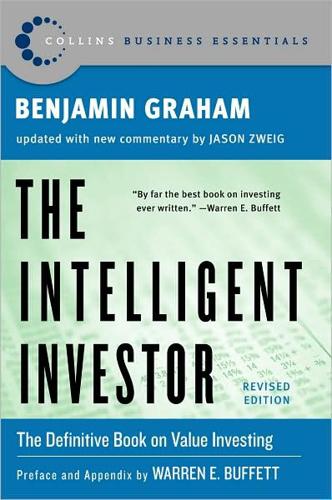
The Intelligent Investor (Collins Business Essentials)
by
Benjamin Graham
and
Jason Zweig
Published 1 Jan 1949
As of year-end 2002, the payout ratio stood at 34.1% for the S & P 500-stock index and, as recently as April 2000, it hit an all-time low of just 25.3%. (See www.barra.com/ research/fundamentals.asp.) We discuss dividend policy more thoroughly in the commentary on Chapter 19. * Why is this? By “the rule of 72,” at 10% interest a given amount of money doubles in just over seven years, while at 7% it doubles in just over 10 years. When interest rates are high, the amount of money you need to set aside today to reach a given value in the future is lower—since those high interest rates will enable it to grow at a more rapid rate.
…
* Today’s defensive investor should probably insist on at least 10 years of continuous dividend payments (which would eliminate from consideration only one member of the Dow Jones Industrial Average—Microsoft—and would still leave at least 317 stocks to choose from among the S & P 500 index). Even insisting on 20 years of uninterrupted dividend payments would not be overly restrictive; according to Morgan Stanley, 255 companies in the S & P 500 met that standard as of year-end 2002. † The “Rule of 72” is a handy mental tool. To estimate the length of time an amount of money takes to double, simply divide its assumed growth rate into 72. At 6%, for instance, money will double in 12 years (72 divided by 6 = 12). At the 7.1% rate cited by Graham, a growth stock will double its earnings in just over 10 years (72/7.1 = 10.1 years)
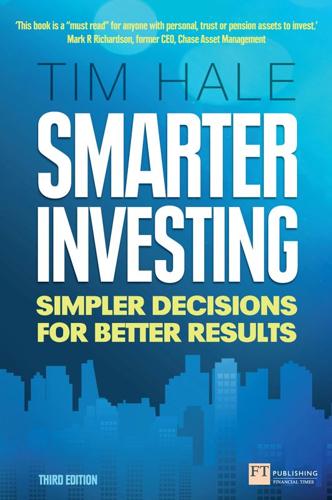
Smarter Investing
by
Tim Hale
Published 2 Sep 2014
The cautious long-term investor Imagine that you are an investor that finds the whole concept of investment worrying and the loss of capital scares you. As a long-term investor of this ilk, there is one thing that you must protect against and that is inflation. Even at what seem relatively low levels of inflation, your spending power in retirement could be significantly eroded. Tip: The Rule of 72 is a useful one: divide 72 by the rate of inflation to see how quickly the price of goods will double. For example, with inflation of 3% the price of goods will double in 24 years (72/3 = 24). That is likely to be a risk that you simply cannot afford to take. Many very cautious investors simply put their cash on deposit.
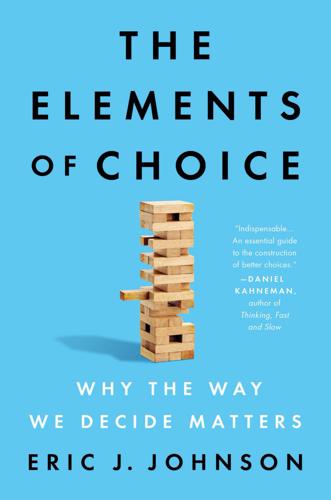
The Elements of Choice: Why the Way We Decide Matters
by
Eric J. Johnson
Published 12 Oct 2021
Better Check Your Uber Rating”; Shaban, “Uber Will Ban Passengers with Low Ratings”; Cook, “Uber’s Internal Charts Show How Its Driver-Rating System Actually Works.” 8. The actual way of calculating this is given by the formula (log(2)/log(1 +(interest rate)/100), which I am sure you can do in your head. But there is a trick that gets you very close, called the rule of 72. To find out how long it takes to double an amount at interest rate r, 10 percent in the example, simply divide 72 by r. So 72/10 in our example means that the money doubles in 7.2 years. In 7.2 years, you will have $20,000. That means that in forty-five years, the money will double 6.2 times, or total $760,000, a close approximation.

A Random Walk Down Wall Street: The Time-Tested Strategy for Successful Investing
by
Burton G. Malkiel
Published 10 Jan 2011
Next year, you also earn 10 percent on the $110 you start with, so you have $121 at the end of year two. Thus, the total return over the two-year period is 21 percent. The reason it works is that the interest you earn from your original investment also earns interest. Carrying it out in year three, you have $133.10. Compounding is powerful indeed. A useful rule, called “the rule of 72,” gives you a shortcut way to find out how long it will take to double your money. Take the interest rate you earn and divide it into the number 72, and you get the number of years it will take to double your money. For example, if the interest rate is 15 percent, it takes a bit less than five years for your money to double (72 divided by 15 = 4.8 years).

The Four Pillars of Investing: Lessons for Building a Winning Portfolio
by
William J. Bernstein
Published 26 Apr 2002
This means the market expected these companies to eventually increase their earnings relative to the size of the market to three or four times their current proportion. This is a tricky concept. Let us assume that the stock market grows its earnings at 5% per year. This means that over a 14-year period, it will approximately double its earnings. (This is according to the “Rule of 72,” which states that the earnings rate times the doubling time equals 72. In the above example, 72 divided by 5% is approximately 14. Or, alternatively, at a 12% growth rate, it takes only six years to double earnings.) If a glamorous growth company is selling at four times the P/E ratio of the rest of the market—say, 80 times earnings versus 20 times earnings—then the market is saying that during this same 14-year period, its earnings will grow by a factor of eight (4 × 2 = 8).

Infinite Powers: How Calculus Reveals the Secrets of the Universe
by
Steven Strogatz
Published 31 Mar 2019
You should get 90. As before, logs and exponentials undo each other’s actions like a stapler and a staple remover. Recondite as all this may sound, the natural logarithm is extremely practical, though often inconspicuously. For one thing, it underlies a rule of thumb known to investors and bankers as the rule of 72. To estimate how long it will take to double your money at a given annual rate of return, divide 72 by the rate of return. Thus, money growing at a 6 percent annual rate doubles after about 72/6 = 12 years. This rule of thumb follows from the properties of the natural logarithm and exponential growth and works well if the interest rate is low enough.
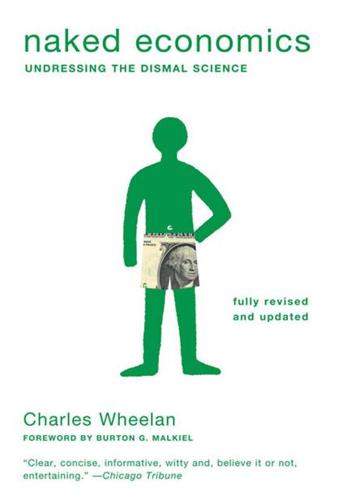
Naked Economics: Undressing the Dismal Science (Fully Revised and Updated)
by
Charles Wheelan
Published 18 Apr 2010
From 1975 until the mid-1990s, for reasons that are still not fully understood, productivity growth slowed to 1.4 percent a year. Then it got better again; from 2000 to 2008, productivity growth returned to a much healthier 2.5 percent annually. That may seem like a trivial difference; in fact, it has a profound effect on our standard of living. One handy trick in finance and economics is the rule of 72; divide 72 by a rate of growth (or a rate of interest) and the answer will tell you roughly how long it will take for a growing quantity to double (e.g., the principal in a bank account paying 4 percent interest will double in roughly 18 years). When productivity grows at 2.7 percent a year, our standard of living doubles every twenty-seven years.
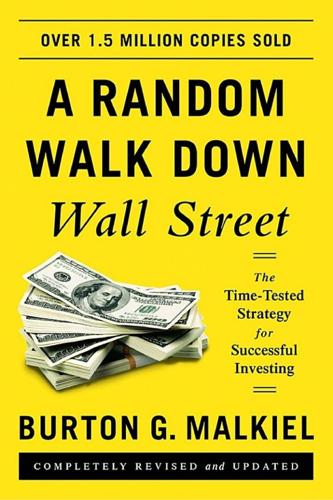
A Random Walk Down Wall Street: The Time-Tested Strategy for Successful Investing (Eleventh Edition)
by
Burton G. Malkiel
Published 5 Jan 2015
Next year, you also earn 10 percent on the $110 you start with, so you have $121 at the end of year two. Thus, the total return over the two-year period is 21 percent. The reason it works is that the interest you earn from your original investment also earns interest. Carrying it out in year three, you have $133.10. Compounding is powerful indeed. A useful rule, called “the rule of 72,” provides a shortcut way to determine how long it takes for money to double. Take the interest rate you earn and divide it into the number 72, and you get the number of years it will take to double your money. For example, if the interest rate is 15 percent, it takes a bit less than five years for your money to double (72 divided by 15 = 4.8 years).

The Simple Living Guide
by
Janet Luhrs
Published 1 Apr 2014
At least open up a passbook savings or money market account at your bank while you are shopping for the best investment package. Remember, any investment is better than continually giving your money away to the tailor, the baker, and candlestick maker. Why line their pockets when you can line your own? To get yourself fired up about how much you can earn by investing, use the Rule of 72. This tells you how long it will take for your money to double. Divide 72 by the interest rate you are getting. If you earn 8 percent, your money takes 9 years to double (8 into 72 is 9). If you invest $5,000 at 10 percent, you divide 72 by 10, which yields 7.2 years. After 7.2 years you will have $10,000.
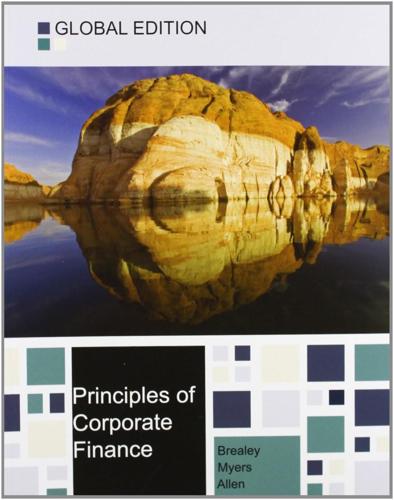
Principles of Corporate Finance
by
Richard A. Brealey
,
Stewart C. Myers
and
Franklin Allen
Published 15 Feb 2014
A 20-year annuity starting at $100 per year but declining at 5% per year. CHALLENGE 38. Future values and continuous compounding Here are two useful rules of thumb. The “Rule of 72” says that with discrete compounding the time it takes for an investment to double in value is roughly 72/interest rate (in percent). The “Rule of 69” says that with continuous compounding the time that it takes to double is exactly 69.3/interest rate (in percent). a. If the annually compounded interest rate is 12%, use the Rule of 72 to calculate roughly how long it takes before your money doubles. Now work it out exactly. b. Can you prove the Rule of 69?

MONEY Master the Game: 7 Simple Steps to Financial Freedom
by
Tony Robbins
Published 18 Nov 2014
After reading this book, you will learn a strategy that is based on Ray’s groundbreaking approach for the world’s wealthiest individuals, institutions, and governments. HOW FAST CAN YOU GO? It’s probably pretty obvious that we’d all like better returns. But what’s less obvious is the massive impact that better returns have on your time horizon for investing. The “rule of 72” says that it takes 72 years to double your money at a 1% compounded rate. So if you’ve got $10,000 to invest at 1% compounded, you may not be around to see that money double. You can cut that timeline in half by doubling your rate to 2%, and in half again by doubling that rate to 4%! So what’s the difference between a 10% return and a 4% return?

Bourgeois Dignity: Why Economics Can't Explain the Modern World
by
Deirdre N. McCloskey
Published 15 Nov 2011
Unless one believes in mercantilist/business-school fashion that a country must “compete” to prosper from world betterment, even the leaky boats of the Phelpsian undynamic countries will rise. To appreciate what will happen in the world’s economy over the next fifty or a hundred years it’s a good idea to pause to learn the “Rule of 72.” The rule is that something (such as income) growing at 1 percent per year will double in seventy-two years. The fact is not obvious without calculation. It just happens to be true. You can confirm it by taking out your calculator and multiplying 1.01 by itself seventy-two times. It follows that if the something grows twice as fast, at 2 percent instead of 1 percent, that something will double, of course, in half the time, thirty-six years—as a runner going twice as fast will arrive at the mile marker in half the time.